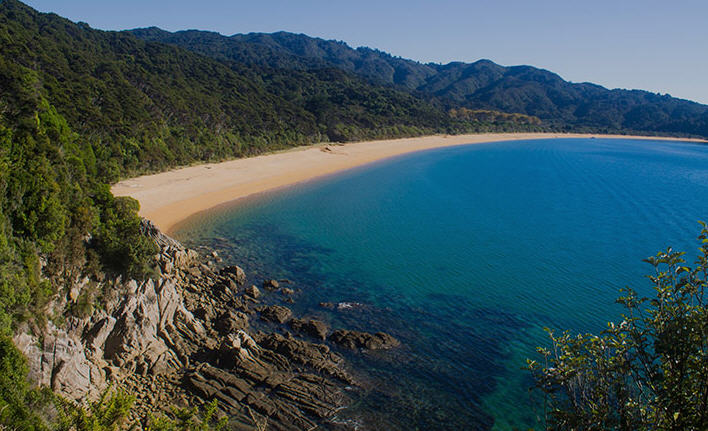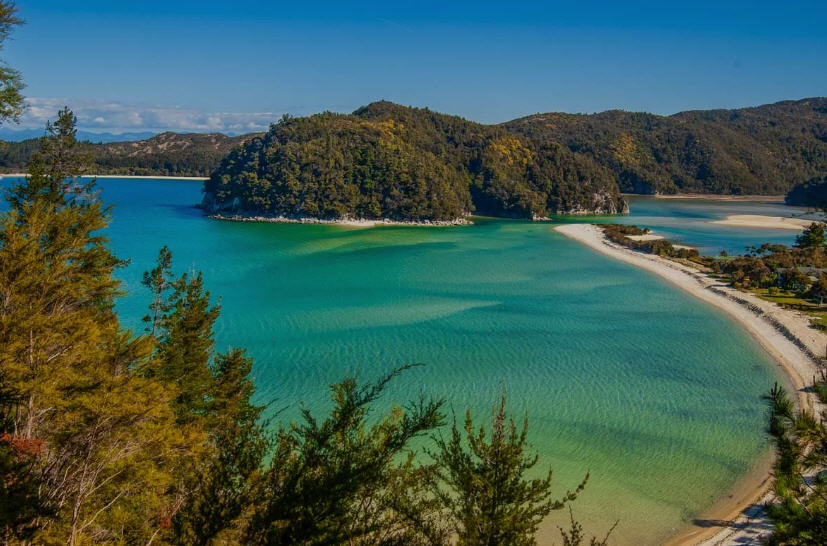
Blog:WGS-B0037
Country:South Island, New Zealand
City/Region:Abel Tasman National Park
Interest:Nature, Adventure
Best Time to Visit: Summer (December-February)
Nearest Airport:Nelson Airport (NSN)
Table of Contents
Abel Tasman hidden beaches
Escape the crowds and venture off the beaten path to discover Abel Tasman’s hidden beaches. Feel the soft, white sand between your toes as you explore secluded coves shaded by lush rainforest. Hear the gentle lapping of turquoise waters against pristine shores, a soothing soundtrack to your exploration. Breathe in the fresh, salty ocean air and admire stunning views of the Tasman coast. Discover the tranquility and natural beauty of Abel Tasman’s hidden gems.
Abel Tasman bird calls
Immerse yourself in the rich soundscape of Abel Tasman National Park, where a symphony of bird calls fills the air. Listen for the haunting cry of the morepork owl echoing through dense native bush. Tune your ears to the melodic warbling of bellbirds and the distinctive chirp of the tūī. Discover the vibrant and diverse vocalizations of Abel Tasman’s feathered residents, a captivating reminder of the park’s natural abundance and rich biodiversity.
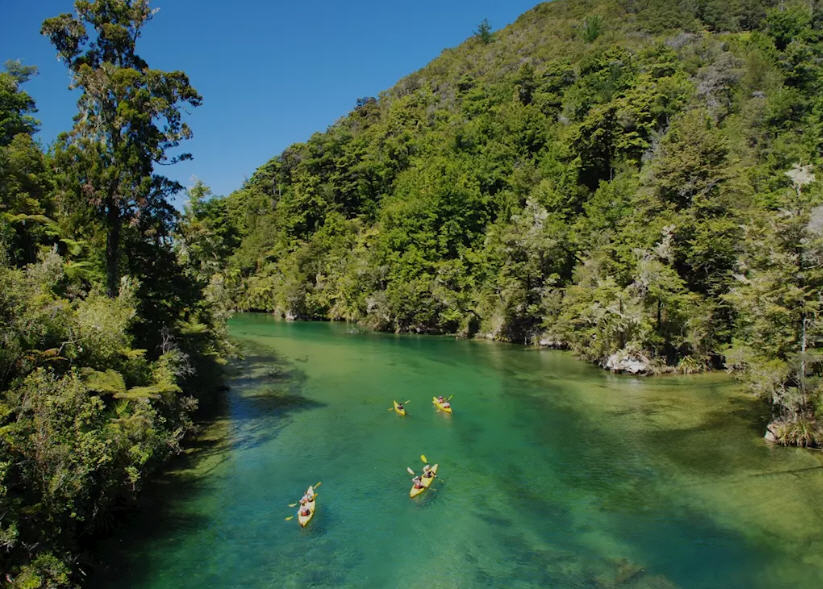
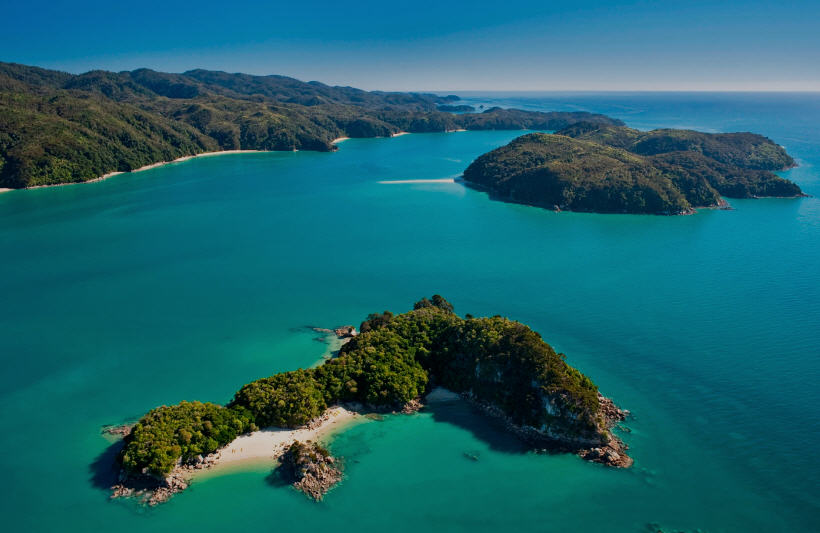
Abel Tasman granite textures
Run your fingers over the smooth, water-worn surfaces of Abel Tasman’s granite formations, sculpted by centuries of wind and waves. Feel the cool, polished textures of boulders washed ashore and admire their unique patterns and colors. Discover hidden crevices and weathered surfaces, each groove and ridge a testament to the relentless forces of nature. Let the unique textures of Abel Tasman’s granite ignite your sense of touch and transport you back in time.
Abel Tasman sea kayaking sounds
Embrace the serenity of Abel Tasman on a sea kayaking adventure. Feel a sense of rhythm as you dip your paddle into the calm water, the gentle splash creating a soothing soundtrack. Hear the rhythmic swoosh of your kayak as it glides effortlessly through the clear waters. Listen to the soft lapping of waves against the kayak and the calls of seabirds echoing in the distance. Embrace the tranquility and immerse yourself in the natural beauty of Abel Tasman as your paddle dips in and out of the water.
Abel Tasman wind in the bush
Experience the gentle rustling of Abel Tasman’s native beech forest trees as a breeze whispers through the leaves. Hear the rhythmic swaying of branches and the soft murmur of wind as it filters through the dense foliage. Let this soothing melody lull you into the embrace of nature. Feel a shift in texture as moist breezes carry the ocean’s salty tang, merging the smells of sea spray with the forest’s earthy scent.
Abel Tasman koura (pigeon) encounters
Keep an eye out for the beautiful koura, or wood pigeon, an iconic New Zealand bird found in Abel Tasman National Park. Witness the soft, whirring beat of its large wings as it takes flight. Hear its distinctive cooing call resonate through the forest. Look for these large, clumsy birds as they waddle along the forest floor or settle on branches, their plump bodies adding a touch of character to the park’s wildlife. Discover the unique charm of the koura, a captivating symbol of Abel Tasman’s rich biodiversity.
Abel Tasman glowworm caves
Venture into the magical world of Abel Tasman’s glowworm caves, where darkness transforms into a dazzling spectacle of bioluminescent light. Feel the cool, damp air and navigate by the soft light cast by your guide’s headlamp. Hear the gentle dripping of water echoing through the cave’s stillness. Witness thousands of glowworms clinging to the cave walls and ceiling, their tiny lights creating a mesmerizing display resembling a starry night sky. Immerse yourself in this otherworldly scene of natural beauty, a captivating wonder of Abel Tasman National Park.
Abel Tasman forest smells
Immerse yourself in the unique scents of Abel Tasman’s native beech forest. Breathe deeply, filling your lungs with the refreshing fragrance of damp moss and ferns, a cool, earthy aroma. Catch subtle floral notes carried by the breeze as you enter clearings blanketed with vibrant wildflowers. Let the intoxicating blend of scents awaken your senses and transport you deep into the heart of Abel Tasman’s pristine rainforest, revealing its rich biodiversity.
Things To Do
Abel Tasman Coastal Track: Lace up your boots for this iconic 3-5 day hike, hugging the coastline through native forest and golden beaches. Pitch your tent under star-studded skies, feeling the rhythm of the waves.
Kayaking Paradise: Glide through turquoise waters, weaving between towering cliffs and secret coves. Paddle into hidden lagoons, past playful seals, and discover hidden waterfalls.
Motupipi Reserve: Embark on a time travel adventure through this ancient rainforest. Spot rare birds like the kakapo, witness towering rimu trees, and feel the cool embrace of nature’s cathedral.
Te Waikoropupu Springs: Dive into the crystal-clear waters of these “Pupu Springs,” renowned for their aqua blue hues and vibrant plant life. Snorkel or take a boat tour to witness this underwater wonderland.
Cleopatra’s Pool: Nestled within a hidden cave, this natural pool offers a refreshing dip after a day of exploring. Swim beneath rock arches and sunbathe on smooth pebbles, enveloped by the magic of the landscape.
Beyond the Park
Marahau: This charming village serves as the gateway to Abel Tasman. Rent kayaks, book tours, and indulge in delicious seafood at local cafes.
Golden Bay: Discover hidden beaches, dramatic rock formations, and quirky towns like Takaka. Hike the Kahurangi National Park, home to towering mountains and ancient caves.
Nelson: Immerse yourself in the artistic vibe of this historic city. Explore museums, sample craft beers, and wander through the Saturday market bursting with local produce.
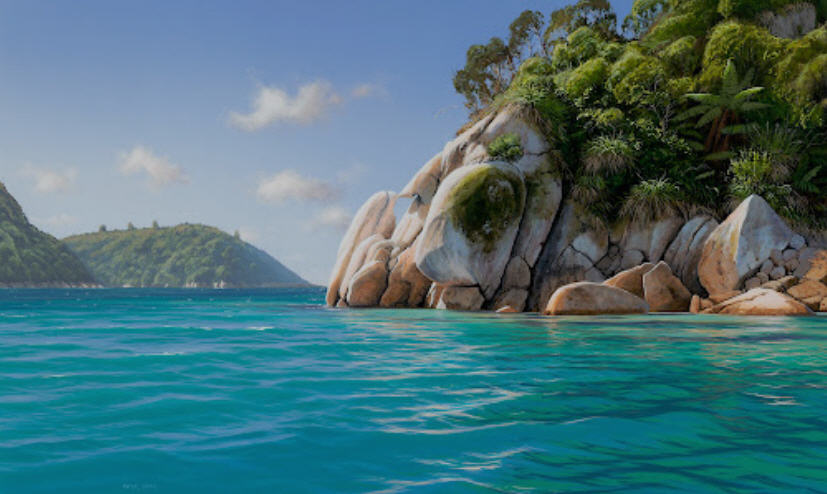
Nearest Airport and Best Time to Visit
Nearest Airport:
Nelson Airport (NSN)
Best Time to Visit:
- Summer (December-February): Warm weather, ideal for swimming and outdoor
Want to get in touch with us?
Questions you might have for this Blog
Feel free to ask questions.
General Questions:
If you have noticed any information that is not accurate, please let us know.
An Advertiser:
Your ads will be in the section below “Ads for Businesses”. Please also refer to the Subscription Plans tab.
For ads we would prefer your website presence where you would maintain your B2B price, deals or promotions etc. A control number link will connect to advertisers website.
Book Air and Hotel (Check for deals in our Ad Section below)

Travel Insurance

- InsureMyTrip : (https://www.insuremytrip.com/) This is a well-known online platform that allows users to compare and purchase travel insurance from various providers.
- TravelGuard https://www.travelguard.com/) TravelGuard is a reputable company that offers comprehensive travel insurance plans and is often cited as a reliable source for purchasing travel insurance.
- Squaremouth https://www.squaremouth.com/) Squaremouth is an authoritative website for comparing travel insurance policies and obtaining quotes from different providers, making it a valuable resource for travelers seeking coverage.
Business Ad Section - This may include deals or promotions.
Abel Tasman National Park History
Māori Presence and Traditions
- Centuries of Connection: Māori tribes, including Ngāti Tūmatakōkiri and Ngāti Rārua, have deep ancestral links to this land. It was used for resource gathering, travel, and settlement for generations.
- Evidence of the Past: Middens, food pits, and other archaeological sites speak to the long history of Māori connection to what’s now the park.
- Guardianship (Kaitiakitanga): Māori hold cultural knowledge and traditional ecological practices in relation to the area.
European Arrival and Change
- Abel Tasman’s Encounter (1642): The Dutch explorer briefly sighted the area, with initial interactions with Māori turning hostile, preventing further exploration.
- Limited Impact: Unlike some parts of New Zealand, sustained European settlement within the park area remained minimal for centuries.
- Resource Extraction: Some logging and attempts at farming occurred in the 19th century, altering parts of the landscape.
Conservation Movement Leads to Park
- Early Advocates: Figures like Perrine Moncrieff campaigned to protect the area’s natural beauty and ecological value from the 1930s onward.
- Park Creation (1942): Due to public pressure, it became New Zealand’s smallest national park, a testament to its special character.
- Evolving Management: Policies regarding use, access, and conservation have shifted over time, sometimes with tension between tourism and preservation goals.
Abel Tasman Today
- Major Tourist Destination: Famed for the Coast Track, beaches, and wildlife – its popularity creates pressure on the ecosystem.
- Co-Management with Māori: There’s an ongoing process of greater collaboration with iwi (tribes) in recognition of their historical and cultural connection to the park.
- Ongoing Challenges: Balancing tourism, conservation of vulnerable species, and respect for Māori heritage are issues the park must continually navigate.
Key Points
- Abel Tasman has a layered history, where an underlying Māori connection was later overlaid with European exploration and ultimately a strong conservation drive.
- It’s a success story of protecting a special place, but also reflects ongoing tensions about how best to manage it sustainably.
Resources for Exploration
- Department of Conservation Website (Abel Tasman)
- Project Janszoon (Conservation Initiative): https://www.janszoon.org/
Some interesting facts
Although it’s possible to visit on a half-day trip, I highly recommend giving Abel Tasman at least one full day as it’s such a beautiful place and you’ll want time to linger on those beaches. Even after six trips to the park, we still can’t wait to return.F
Abel Tasman Track Facts
The Abel Tasman Coastal Track is 60km long, running between Marahau and Wainui Inlet. It takes 4 days to walk the whole track. Most people walk the most popular part of the track in 3 days from Marahau to Totaranui. The track is well-serviced by water taxis up until Totaranui.
The Abel Tasman National Park has a wide variety of accommodation options from luxury lodges to basic camping sites, and even a unique floating backpacker lodge. Although not a lot of planning and preparation is required to enjoy the Abel Tasman, some really basic prep can greatly enhance your experience.
Seafarer, explorer and merchant Abel Janszoon Tasman was the first European to discover Tasmania and confirm Australia as an island continent. Born in the Netherlands around 1602, he was raised and educated in Lutjegast, Gronigen.
The Abel Tasman Coast Track can be enjoyed as a half-day, full-day or multi-day walking adventure. It’s well-formed, gently undulating track flows along the coastline and offers breathtaking views down to lush forest fringed golden-sand beaches and, numerous walks to choose from.
